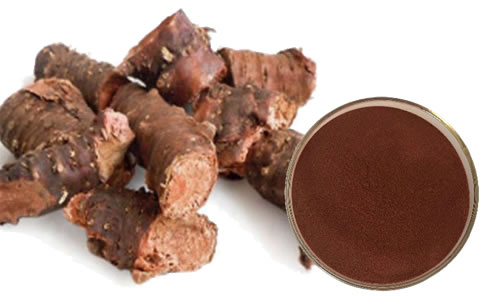[product name]: rhodiola extract
[English name]: Salidroside
[extract part]: underground tuber and rhizome of Rhodiola
[Specification]: salidroside 1% - 10% Losec 1% - 10%
[product properties]: brown powder

[introduction to Rhodiola]:
Rhodiola (also known as Arctic root, goldroot) is one of the plants of jingtianke, which originated in the Arctic Circle of eastern Siberia. Rhodiola is widely distributed in the polar and mountainous regions of Europe and Asia. Most of them grow between 11000 and 18000 feet above sea level. Rhodiola is classified as an adaptive agent by Soviet scientists for its ability to increase a variety of chemical, biological and physical stress. The term adaptation originated in 1947 and was proposed by a Soviet scientist, Lazarev. He defines an "aptamer" as a drug that neutralizes adverse physical, chemical, or biological stresses by producing nonspecific resistance. Rhodiola has been studied for more than 35 years in Soviet Union and Scandinavia.
[geographical distribution]:
There are more than 80 kinds in China, which are distributed in southwest, northwest, North China and northeast. The main production areas are Jilin, Hebei, Qinghai, Xinjiang, Sichuan, Yunnan, Guizhou, Tibet and other provinces. There are 32 species in Tibet, the number and reserves of which are the first in the world. There are 28 species in Yunnan, 26 in Sichuan and 13 in Xinjiang.
[plant form]:
Plant form perennial herb, height 10-20cm. The root is thick, cone-shaped, fleshy, brown yellow, with many fibrous roots at the root neck, and the rhizome is short, thick, cylindrical, and mostly imbricate arranged scalelike leaves. Apex acute or acuminate, entire or upper with a few teeth, base slightly amplexicaul. Inflorescence corymbose, densely flowered, 2 cm long, 3-6 cm wide; dioecious; sepals 4, lanceolate linear, 1 mm long, obtuse; petals 4, yellow green, linear oblanceolate or oblong, 3 mm long, obtuse; stamens 8 in male flowers, longer than petals; scales 4, oblong, 1-1.5 mm long, 0.6 mm wide, slightly narrow in upper part, dentate emarginate at apex; female flower central skin 4, style recurved. Follicles lanceolate or linear lanceolate, erect, 6-8 mm long, beak 1 mm long; seeds lanceolate, 2 mm long, narrowly winged on one side. The flowering period is from April to June, and the fruiting period is from July to September. Rhodiola can also replenish qi and clear lung, replenish intelligence and nourish heart. It is a widely used traditional Chinese medicine. It grows in a cold and pollution-free zone 800-2500 meters above sea level. It can be used as medicine and has great beauty effect. It can be used as skin care products and edible.
[chemical composition]:
Nearly 200 different Rhodiola species have been identified. Only 14 species of Rhodiola have been biochemical studied and found that its chemical components and pharmacological activities are obviously related to its species. Its unique chemical active components are rosavin (the most active), rosin, rosarin, rhodiolin and salidroside. Only Rhodiola rosea contains rosavin, rosin and rosarin.
[extraction method]:
The extraction and separation method of salidroside is as follows: the rhizome of Rhodiola is crushed and refluxed with 70% ethanol for extraction, the extraction liquid is divided into different parts, and the ethanol is recovered under reduced pressure. The concentration liquid is evenly stirred with equal amount of water, standing, filtered and repeatedly treated for three times. The filtrate is concentrated under reduced pressure, and then extracted with petroleum ether, chloroform, ethyl acetate, n-butanol, ethyl acetate and n-butanol, Get rough Rhodiola.